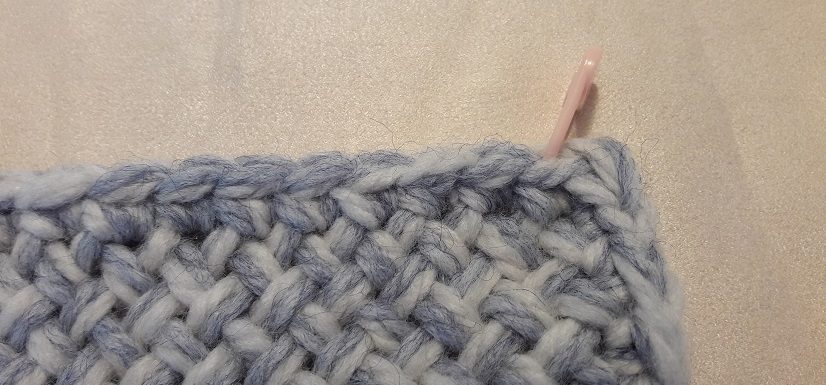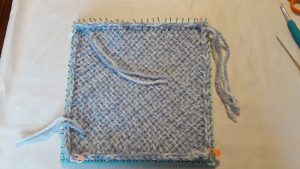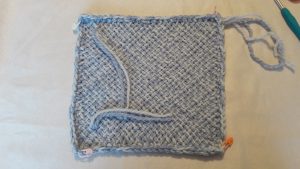Ending
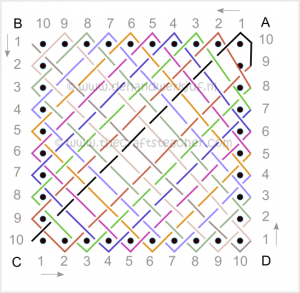
The ending at corner A is a bit different than with the other corners, because you have a sideloop around the top 2 nails. In the next picture you have come at corner A. In the drawing this is the loop around nails 9 and 10. On my loom that’s nail 23. I already did a single crochet in the corner loop, so that’s 23 stitches on that side. It’s the second single crochet in this corner loop, because you already did the first one all the way at the start. Now to make the last ‘stitch’, to take care you get the same number of stitches on each side, we’re going to do a trick.
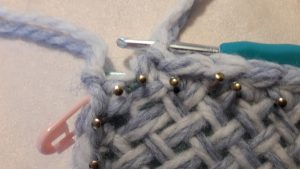
Now you will not be going to make another stitch in this corner loop! And that’s because of 2 reasons.
The first reason is that I don’t want to make more than 2 stitches in the corner loops. When you look at the drawing, and as long as the weave is on the loom, you might think that there would be enough space to do it. It would certainly fit, but once the weave is off the loom, it draws in to the middle, and the corner loop will get a bit smaller. Yarn also has a strong tendency to ‘find it’s natural way’ when it is in a relaxed state. Especially when it’s also washed. And then this corner will be smaller in the end, than when it’s still on the loom. So I want to prevent there will be a ‘lump’ of yarn from the crochet stitches.
The second reason is I want to make an ‘invisible’ finishing. And you do that by ‘simulating’ a stitch with a needle. In this way you have 2 for the price of 1: a nice finishing, and the extra stitch you still need to take care you get the same number of stitches on each side!
I will show you these these last steps in the following pictures.
Cut off the yarn after you’ve made your last stitch, stitch 9, in corner A, and pull the yarn through this stitch right away:
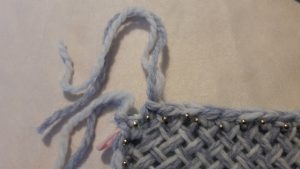
Take a needle and thread it with the yarn end. Put the needle through the V-shape of the very first stitch you made. This is the stitch I marked with a stitch marker. Now you see why it’s so handy to do that!
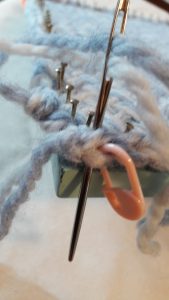
Now insert the needle back again into the center of the V-shape of the crochet stitch you made last.
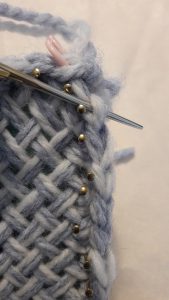
Et voila! The last stitch is made by needle. You now have the same number of stitches on each side!
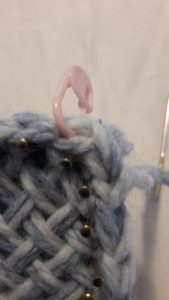
The result
This is how the final result looks when it’s off the loom. In the first picture I left the weave on the loom, to show you that the weave has become a bit smaller, even with the border included, compared to when it was still on the loom, but not very much. The border with single crochets added some heigth. You can also see clearly that corner A has become smaller, and why I didn’t want to make anymore stitches in it.
Some detailed pictures of the corners:
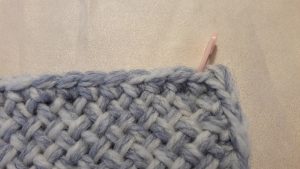
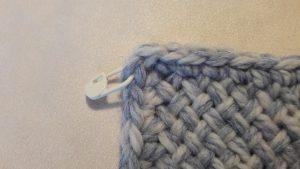
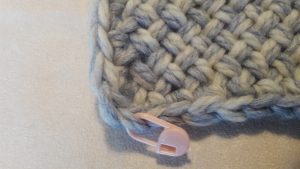
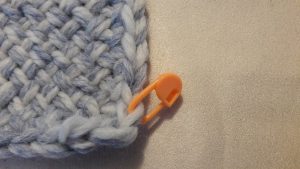
Maybe it’s not super clear in the pictures, but the corners curl to the inside a tiny little bit. Not much, so when attaching pieces together you probably won’t notice it. But take a look at the tutorial here to see what the effect is if you do make extra stitches.
I hope this was again a clear tutorial!

